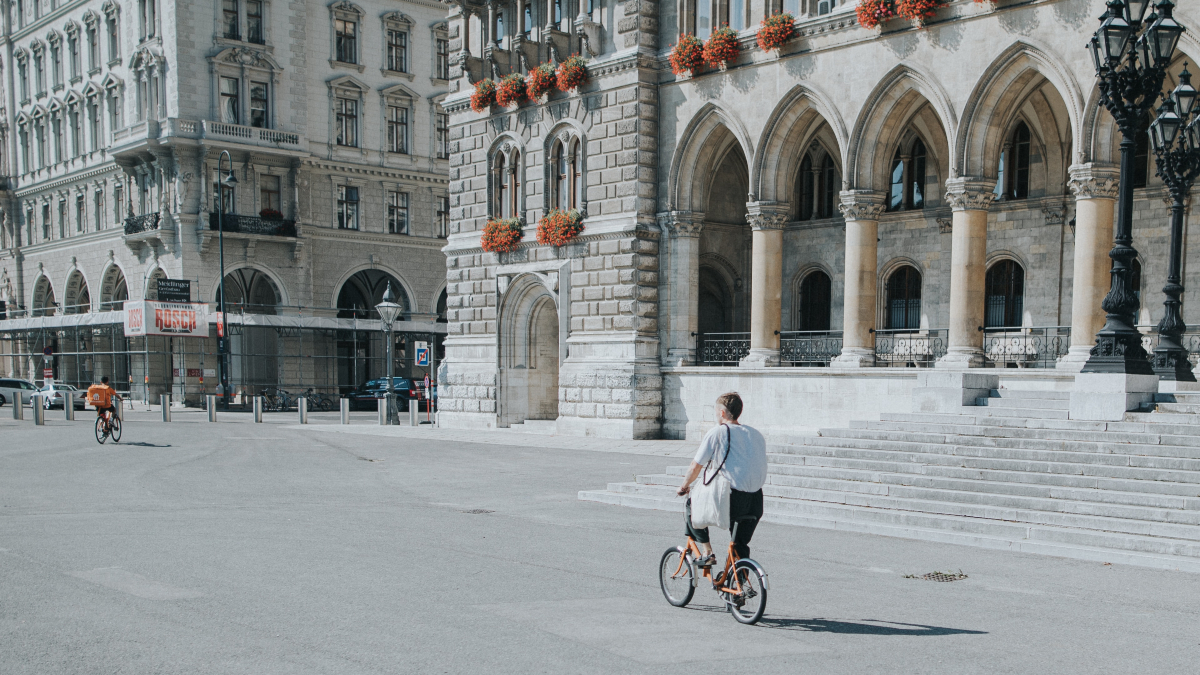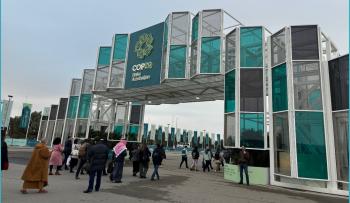
Right at red: Vienna’s innovative step towards more bicycle-friendly urban mobility
The City of Vienna, a member of ECF's CRC network, now allows cyclists to turn right at red lights at over 300 locations, promoting transport safety, sustainability and accessibility for people on bikes.
The City of Vienna, a member of the European Cyclists' Federation's (ECF) Cities & Regions for Cyclists Network, has taken a significant stride forward in improving its bicycle-friendly urban mobility. In an ambitious move, city authorities have now introduced Grünpfeile (green arrows) at 330 traffic lights across the city, granting cyclists the permission to turn right at red signals. This innovative measure aims to catalyse the growth of cycling in Vienna, further encouraging sustainable transportation and reducing congestion. The possibility of Grünpfeile was an addition to Austrian Straßenverkehrsordnung (road traffic regulations). Since October 2022 Grünpfeile have been legally possible in Austria.
The introduction of the Grünpfeile at traffic lights signifies the city's commitment to making cycling safer, more convenient and attractive for residents and visitors alike. This landmark decision not only empowers cyclists but also aligns with Vienna's broader vision to become a model city for sustainable transportation in Europe.
“I am pleased that we can offer Vienna's cyclists this opportunity to such a large extent,” City Councillor for Mobility Ulli Sima announced via a press release. “In addition to the consistent expansion of cycle paths, in which we are investing more than 25 million euros this year, turning right on red makes cycling in Vienna even more attractive. It reduces waiting times and ensures rapid progress. But it is clear that the safety of all road users has priority, that coexistence in traffic is our central concern.”

The introduction of Grünpfeile aims to increase Vienna's cycling levels, aiming to make it one of Europe’s leading cycling cities (Photo via iStock.com)
Safer cycling through smart infrastructure
The implementation of the Grünpfeile is more than just a policy change; it is an embodiment of Vienna's commitment to smart and sustainable infrastructure development. By allowing cyclists to turn right at red lights, the city aims to reduce the potential conflicts between motorists and cyclists at intersections. This measure not only enhances cyclists' safety but also encourages more people to take up cycling as a viable means of transportation.
“I am sure that the Grünpfeile will be well used by cyclists and will work in Vienna. Experience with locations that have already been enacted shows that,” said Vienna’s Cycling Officer Martin Blum, according to ots.at. Regarding safety, he emphasised, “It is important that after a short stop before cycling on, you make sure that you are not endangering yourself or others – here it is important to be considerate of pedestrians in particular.”
Speaking on the subject, ECF Policy Officer for Infrastructure Aleksander Buczyński explained, “Most traffic lights are designed to regulate motor vehicle traffic and are not optimised for flow and safety of cycle traffic, even if dedicated signals for cycle traffic are provided.”
“Adding an exemption for cyclists, allowing them to cross the intersection at red light, is a low-cost measure to prioritise cycling. It can also improve their safety, allowing them to avoid conflicts with turning vehicles by picking the time of crossing on their own.”
Promoting active mobility and reducing emissions
The introduction of this progressive cycling policy aligns seamlessly with Vienna's broader sustainability goals. As a member of ECF's Cities & Regions for Cyclists Network, Vienna is part a network of European cities dedicated to promoting cycling and active mobility and reducing carbon emissions. Encouraging cycling not only contributes to cleaner air but also plays a pivotal role in combatting the climate crisis, fostering a healthier and greener urban environment.
Enhancing Accessibility and Liveability
By facilitating right turns at red lights for cyclists, the City of Vienna has taken a crucial step in improving urban mobility and accessibility. Cyclists can now navigate through the city more efficiently, enjoying a more seamless travel experience. This enhancement in accessibility further bolsters Vienna's reputation as a highly liveable city, prioritising the needs and well-being of its residents.

Promoting cycling in Vienna is a key method to increase the liveability of the city, while also reducing environmental damage caused by transport emissions (Photo via unsplash.com)
Cultural shift towards active transportation
The move towards allowing right turns at red lights for cyclists also reflects a broader cultural shift towards active transportation. As cities worldwide recognise the importance of reducing traffic congestion and promoting healthier lifestyles, cycling has emerged as an integral component of urban planning. Vienna's proactive approach to accommodating cyclists sends a positive message to other cities across the globe, inspiring them to embrace similar measures for a more sustainable future.
“Traffic-light exemption for cyclists is one of the solutions extensively discussed in the UNECE Group of Experts on Cycle Infrastructure,” said Buczyński. “As for now, France is a leading innovator in this area, allowing not only turning right, but also other "red light" manoeuvres on selected crossings, and reporting positive experiences with more and more courageous pilots.
“At ECF, we are following with great interest the wide-spread implementation in Vienna. We hope that the exchange of good practices will encourage more countries to enable similar signage in their national legislation, and more cities to put them up on intersections.”
Inclusivity and social cohesion
Bicycle-friendly policies like the Grünpfeile contribute to enhancing social cohesion and inclusivity within the city. Cycling is an affordable mode of transportation accessible to people of all ages and income levels. By investing in cycling infrastructure and implementing cyclist-friendly policies, Vienna fosters an inclusive urban environment where everyone can participate in active mobility, irrespective of their background or socioeconomic status.
Vienna's decision to allow cyclists to turn right at red lights at over 300 locations is a monumental leap towards achieving a more bicycle-friendly city. It sets an example for other cities to follow in promoting active mobility, sustainability and urban liveability. This policy change not only benefits cyclists but also contributes to cleaner air, reduced congestion and a healthier urban landscape. By creating an environment that prioritises cyclists, the City of Vienna takes a step closer to fulfilling its vision of a truly sustainable and inclusive urban future.
Cities & Regions for Cyclists is a network bringing together local and regional administrations, actively working to promote the bicycle as a mode of transport and leisure. For more information on how to join, visit our Cities & Regions for Cyclists page.
Cover photo via presse.wien.gv.at.
Network/Project Involved:
Contact the author
Recent news!
Upcoming events
Contact Us
Avenue des Arts, 7-8
Postal address: Rue de la Charité, 22
1210 Brussels, Belgium









